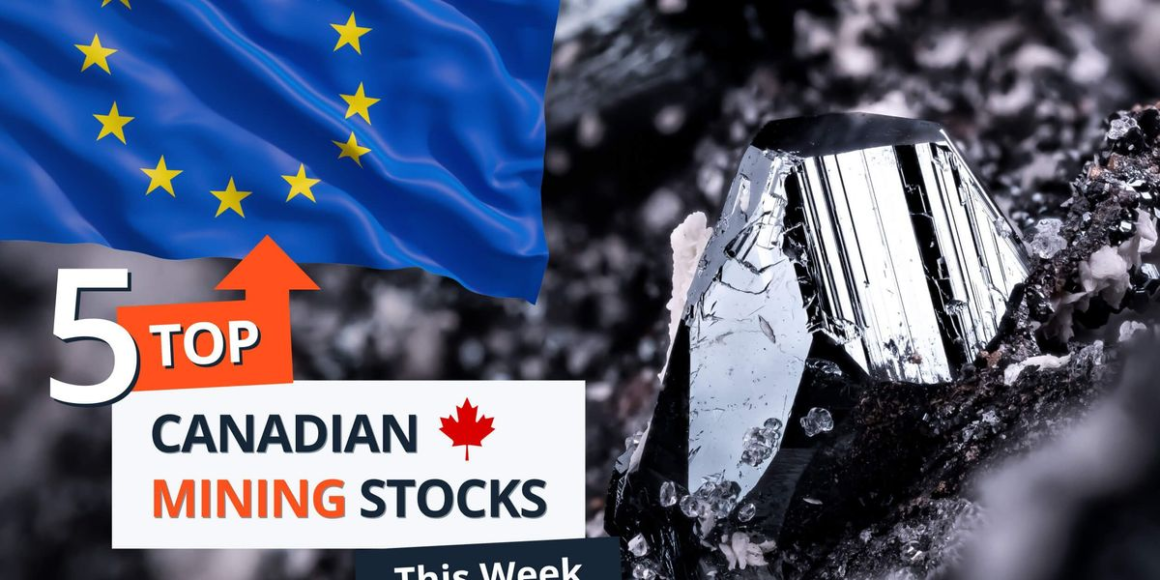Welcome to the Investing News Network’s weekly look at the best-performing Canadian mining stocks on the TSX and TSX Venture Exchange, starting with a round-up of Canadian and US data impacting the resource sector.
The rise was attributed to higher government expenditures, business investments in engineering structures, machinery and equipment along with an increase in household spending on services. Gains were offset by softening exports, residential construction and household spending on goods.
How has this week’s news impacted resource stocks on the TSX and TSX Venture Exchanges? Read on to learn about the top 5 best-performing Canadian mining stocks this week.
Weekly gain: 55.17 percent; market cap: C$16.75 million; share price: C$0.225
Superior Mining International is a lithium exploration company that owns the Vieux Comptoir property located in the Eeyou Istchee-James Bay region of Québec, Canada.
Weekly gain: 50 percent; market cap: C$20.13 million; share price: C$0.06
Euro Manganese is a manganese development company working to advance its Chvaletice waste recycling project. The operation is focused on extracting manganese from tailings that are part of a decommissioned mine site near Prague, Czechia.
As part of the project’s scope, the company says it will carry out remediation and reclamation work to bring the site into compliance with environmental regulations.
If the application is successful, it will provide for a more streamlined permitting process and access to new avenues for funding.
Weekly gain: 40 percent; market cap: C$21.76 million; share price: C$0.245
Avanti Helium is an exploration and development company focused on advancing helium assets in Canada and the US toward production.
Its Greater Knappen projects are composed of several project areas in Southern Alberta, Canada, and Northern Montana, US. The combined land packages cover approximately 74,000 acres with multiple targets. According to the project page, Avanti has drilled three exploration wells in Montana, with two testing for a combined 18.5 million cubic feet per day gas rate with 1.1 percent helium concentration.
The company’s Leader project consists of a combined land package of 91,000 acres in Southern Saskatchewan. The surrounding region has seen 84 wells drilled by other companies since 2016, and as of September 2023, it hosted approximately 25 wells producing 450,000 cubic feet of helium per day.
Shares in Avanti climbed this week, although the company hasn’t released news in August.
Weekly gain: 38.71 percent; market cap: C$10.24 million; share price: C$0.215
Sage Potash is a potash exploration company currently working to advance its portfolio of mineral holdings in Utah’s Paradox basin in the US. Historic oil and gas exploration in the basin dating back a century discovered the potential for the potash beds, but they were too deep for mining methods at the time. Sage has since confirmed their presence through its own exploration.
Sage Potash hasn’t released news in August, but its share price performed strongly this week.
Weekly gain: 31.25 percent; market cap: C$41.15 million; share price: C$0.21
Group Eleven Resources is an exploration company working to advance its flagship PG West zinc, lead, copper and silver project in the Republic of Ireland. The wholly owned asset consists of 22 prospecting licenses covering 650 square kilometers and hosts the main Ballywire prospect discovered in 2022.
Group Eleven said it would use the funds to significantly expand its 2024 drill program at Ballywire.
The TSX, or Toronto Stock Exchange, is used by senior companies with larger market caps, while the TSXV, or TSX Venture Exchange, is used by smaller-cap companies. Companies listed on the TSXV can graduate to the senior exchange.
The exchange lists a handful of other fees and expenses companies can expect, including but not limited to security commission and transfer agency fees, investor relations costs and director and officer liability insurance.
These are all just for the initial listing, of course. There are ongoing expenses once companies are trading, such as sustaining fees and additional listing fees, plus the costs associated with filing regular reports.
Investors can trade on the TSXV the way they would trade stocks on any exchange. This means they can use a stock broker or an individual investment account to buy and sell shares of TSXV-listed companies during the exchange’s trading hours.
Article by Dean Belder; FAQs by Lauren Kelly.
Securities Disclosure: I, Dean Belder, hold no direct investment interest in any company mentioned in this article.
Securities Disclosure: I, Lauren Kelly, hold no direct investment interest in any company mentioned in this article.


Leave a Reply